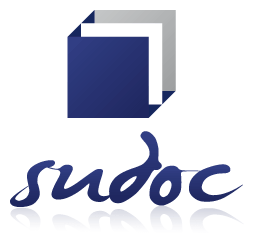Reinterpretation of Iranian-Islamic art in the contemporary era based on the challenges of NFT and a solution from Sheikh Dayeh
DOI:
https://doi.org/10.63053/ijset.17Keywords:
NFT, digital, Islam, human, Sheikh Dayeh, Soul of ArtAbstract
Statement of the problem: Sheikh Dayeh is one of the admirers of divine love among Iranian theoreticians who, in addition to special intellectual highlights, presents two opposite topics, i.e. the subject of reason and love, as one! which, along with his other works, can perhaps be considered as one of the first barakats of art-parody, in this research exactly when we found the economy and art in similar conditions as mentioned above, brought us to that position by updating the thoughts of this sheikh through trial and error. Sitting down, let's see if this cohabitation will become a solvable and practical problem for human life or not. Purpose: In addition to these, taking into account that the sincerity of every word needs examples, naturally, in this article, an attempt was also made to discuss whether or not art has become haram, and in this regard, it also made a special comment on today's themes, which will stress it. With selected documents, we chose a scientist called NFT. Research method: Also, our work is descriptive-analytical and qualitative-applied, and we benefit from both field (interview) and library sources. Conclusion: Finally, we want to reach a transparent, more dynamic (fluid) and universal state with these scientific articles, so that fanatical slogans and superstitions can be removed from the titles of human rights and reach more modern futures. Hope it will be useful.
References
https://civilica.com/doc/1568007
https://civilica.com/doc/1447195/
https://quera.org/blog/10-best-programming-softwares
Bani Ardalan, Ismaeil, Recognizing the status and concept of art, Javadan Kherad magazine, new edition, first issue, winter 2018.
Berry, Daniel, 1401, NFT and Cryptoart translated by Shohreh Taheripour, Tehran: Divar Publishing House.
Tafazoli, Fereydoun, 1401, History of economic ideas (from Plato to the contemporary period), Tehran: Ney Publishing.
Samuels, Warren J., Medema, Steven J., 2016, History of Economic Thought, translated by Mohammad Hossein Waqar, Tehran: Markaz Publishing.
Schwan, Fritiov, 1390, logic and excellence, translated by Hossein Khandaghabadi, Tehran: Negah Moaser Publishing House.
Abdullah bin Mohammad, Najm Razi, 1386, treatise on love and intellect by the effort and correction of Taqi Tafzali, Tehran: Scientific and Cultural Publication.
Modaberi, Mahmoud, 1363, poems of Sheikh Najmuddin Razi (Nanny), Tehran: Tahori Publishing.
Roham Amirpour Amrai's interview with Behrouz Vodjani, art and music researcher in his private home - Tehran: 1402.
Roham Amirpour Amrai's interview with Mohammad Aref, mythologist and playwright at Islamic Azad University - Tehran: 1401.
Downloads
Published
How to Cite
Issue
Section
License
Copyright (c) 2024 International journal of Modern Achievement in Science, Engineering and Technology

This work is licensed under a Creative Commons Attribution 4.0 International License.












